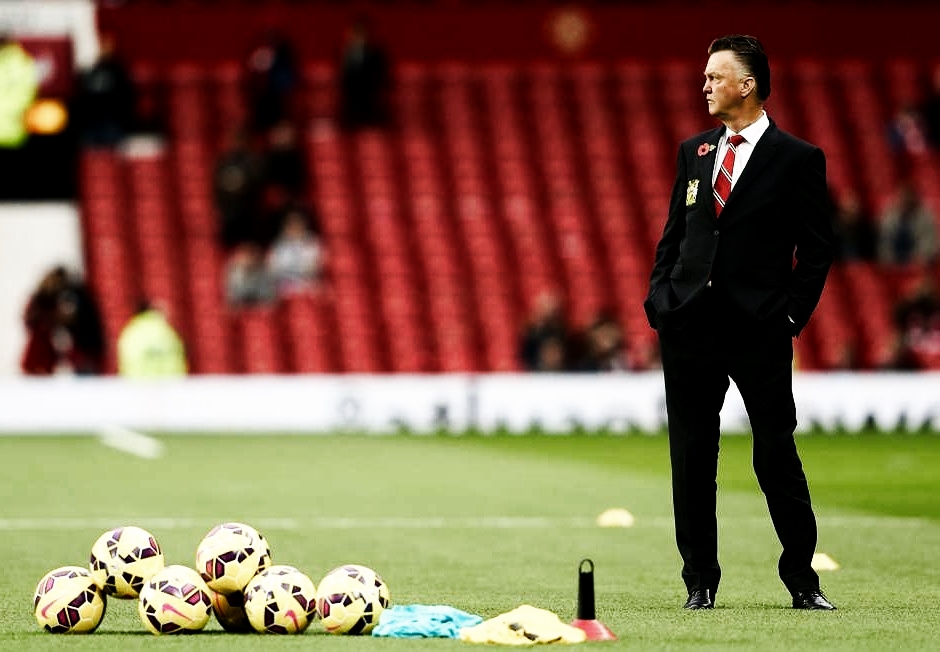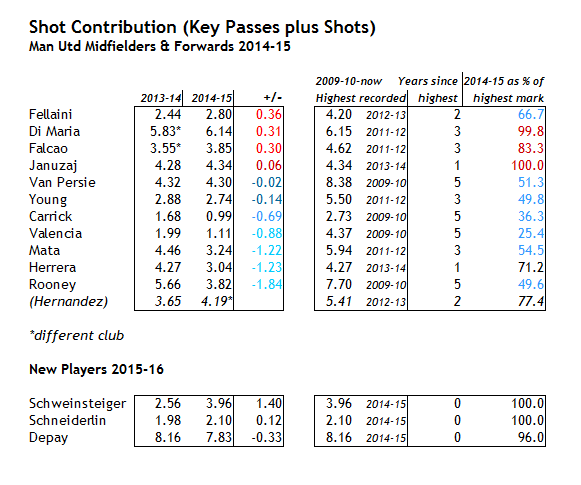Ligue 1 is easily overlooked in the soccer landscape so before we dive into the nitty gritty of teams and players I think some persuasion is in order. If you are already revved up for the Ligue 1 season, you can skip to the teams and players section below. I understand many of you will be hesitant like I was when dipping my toe into Ligue 1 so we need to establish why you should spend some of your time here instead of elsewhere. We all know the negatives: the lack of goals, lack of quality, etc, etc. Let's focus on the positives. What does Ligue 1 bring to the table?
High Stakes In no other big league is there more on the line for spots #2-#6. The stakes can be clearly defined by looking at this revenue table (part of an always insightful read from the Swiss Ramble)
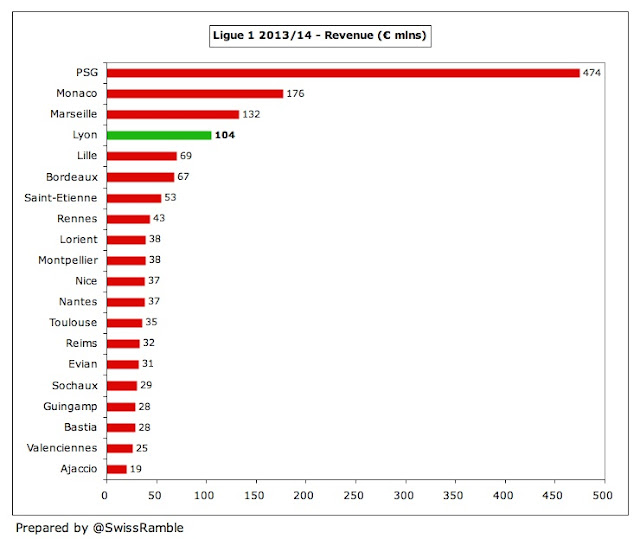
That came in the 2013/14 season when Marseille brought in €32 million via the Champions League. Making the Champions League for every team short of PSG can totally change the direction of a club. In England, missing out on the Champions League hurts as you can't draw the very top players but the new TV deal assures you that money won't be a problem and you can simply continue to poach talent from the continent. In France, your top players will leave and you won't have the money to replace them (see Marseille this season). This creates more long-term fluidity: if Marseille miss the Champions League these next two seasons while St Etienne make it, there is a good chance St Etienne can quickly pass Marseille in the pecking order. Europa League spots take on added importance here as well as it's a competition French teams have a better chance of making a long run in. There is drama in each spot you climb from 6th to 1st, ensuring more meaningful games down the stretch.
Talent The amount of talent that comes from Ligue 1 is hugely impressive as well. Everyone knows about Hazard, Drogba, Essien, etc and the pipeline hasn't run dry. So far this transfer season we have seen €170 million spent on 13 big money moves from French teams to top teams elsewhere. Atletico Madrid, Swansea, Sevilla, Aston Villa, Aston Villa, and then yes, Aston Villa are some of the teams buying up players from France. If you want to be ahead of the curve on these guys, you can start watching now.
The perfect second league If you want to jump into Ligue 1 this season, great news: the games rarely overlap with German or English games, making it a perfect 2nd league. It is presented very well on domestic and English-language TV and you can download the FourFourTwo StatsZone app to get OPTA data for the league real-time. If you are watching St Etienne and it seems like Romain Hamouma is really causing problems or if you are watching Nice and the youngster Albert Rafetraniania is catching your eye, you don't have to guess what they have done you can just pull up the app and check the box score. For the stat-inclined viewer like most of you are, this is an absolute must. If all that hasn't convinced you, once you have read this article you will have enough background knowledge that going in cold won't overwhelm you anymore and you will be invested enough to start watching.
The teams you should be watching
1. Marseille Bielsa’s teams have been covered long enough for it to become a bit of a meme but there is a reason for all the adulation: his teams are a hell of a lot of fun to watch. If you like open, high-tempo, pressing soccer that leads to lots of chances and goals you couldn’t have dreamed a better team than Marseille last year. Marseille led the league most of the season before collapsing late in games and down the stretch of the season in devastating fashion, missing out on the Champions League. No Champions League in Ligue 1 means no money and time to say goodbye to a lot of players. 6 of the 11 players who played 1300 minutes are gone. Two elite players in Imbula and Payet will hurt the most: (for player card methodology please see the players section below) 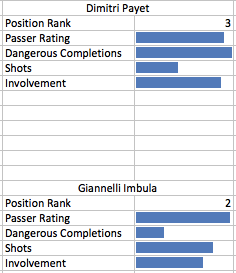 The names will be new but the style will remain Bielstastic as ever as he returns to the bench. Last year only Marseille pressed high, hard and wide:
The names will be new but the style will remain Bielstastic as ever as he returns to the bench. Last year only Marseille pressed high, hard and wide: 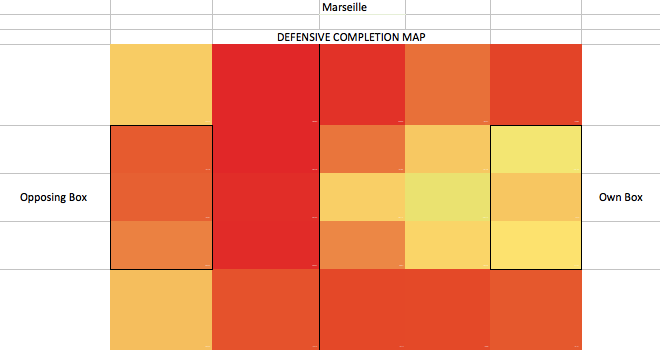 Getting the ball back from the press immediately transitions into shooting quickly. Marseille led the league in shots and deep passes by a wide margin and shot the ball very quickly for a team who has it a lot.
Getting the ball back from the press immediately transitions into shooting quickly. Marseille led the league in shots and deep passes by a wide margin and shot the ball very quickly for a team who has it a lot. 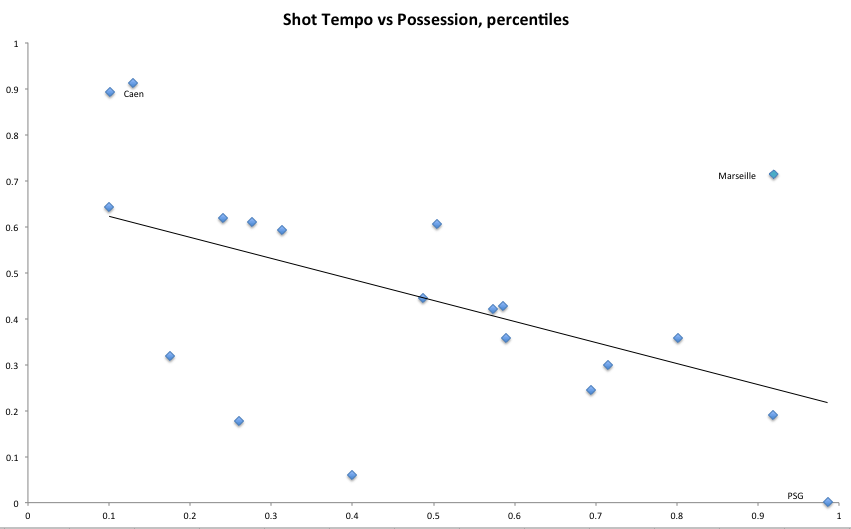 Unsurprisingly, it doesn’t look like Marseille will be backing off the press. Ocampos (in permanently from Monaco) and N’Koudou ranked among the top 5 forward players in defensive actions in Ligue 1 last year and will be tasked with replacing and improving upon Ayew’s hard work at the tip of the spear. Diaby was an excellent defender many years ago and would seem to be a great fit right where Marseille need it, but can’t be counted on for 1500+ minutes yet. Personally, it would be one of the stories of the year if he can regain his form.
Unsurprisingly, it doesn’t look like Marseille will be backing off the press. Ocampos (in permanently from Monaco) and N’Koudou ranked among the top 5 forward players in defensive actions in Ligue 1 last year and will be tasked with replacing and improving upon Ayew’s hard work at the tip of the spear. Diaby was an excellent defender many years ago and would seem to be a great fit right where Marseille need it, but can’t be counted on for 1500+ minutes yet. Personally, it would be one of the stories of the year if he can regain his form.  One of the big problems was they ran out of gas at the end of games and then late in the season, which I wrote about previously. This was harmed by rarely rotating and it’s hard to see how they won’t avoid a similar slump this year if they continue to play so full-bore, as the team is not much deeper and will have Europa League to deal with as well. Last year’s heights will not be reached but there is still enough here to make a run at the Champions League. Batshuayi should be able to replace Gignac and the defense could very easily improve, but finding a player to replace Payet’s table-setting skills will be priority #1. Florian Thauvin and Romain Alessandrini will have the chance to make more plays but the most intriguing player is Abdel Barrada. Barrada put up some very impressive attacking numbers in 276 minutes (sub effect helps, especially in Marseille games which become even more wildly open late). Barrada has started recent friendlies and looks to be given a starting spot at the start of the year to prove he can repeat last years numbers over a full share of minutes.
One of the big problems was they ran out of gas at the end of games and then late in the season, which I wrote about previously. This was harmed by rarely rotating and it’s hard to see how they won’t avoid a similar slump this year if they continue to play so full-bore, as the team is not much deeper and will have Europa League to deal with as well. Last year’s heights will not be reached but there is still enough here to make a run at the Champions League. Batshuayi should be able to replace Gignac and the defense could very easily improve, but finding a player to replace Payet’s table-setting skills will be priority #1. Florian Thauvin and Romain Alessandrini will have the chance to make more plays but the most intriguing player is Abdel Barrada. Barrada put up some very impressive attacking numbers in 276 minutes (sub effect helps, especially in Marseille games which become even more wildly open late). Barrada has started recent friendlies and looks to be given a starting spot at the start of the year to prove he can repeat last years numbers over a full share of minutes.  2. Lyon Efficiency, efficiency, efficiency. It's easy to picture Lyon as a swashbuckling, attacking team battling PSG for the title behind talented forwards like Fekir and Lacazette but the stats do not bear that out.
2. Lyon Efficiency, efficiency, efficiency. It's easy to picture Lyon as a swashbuckling, attacking team battling PSG for the title behind talented forwards like Fekir and Lacazette but the stats do not bear that out. 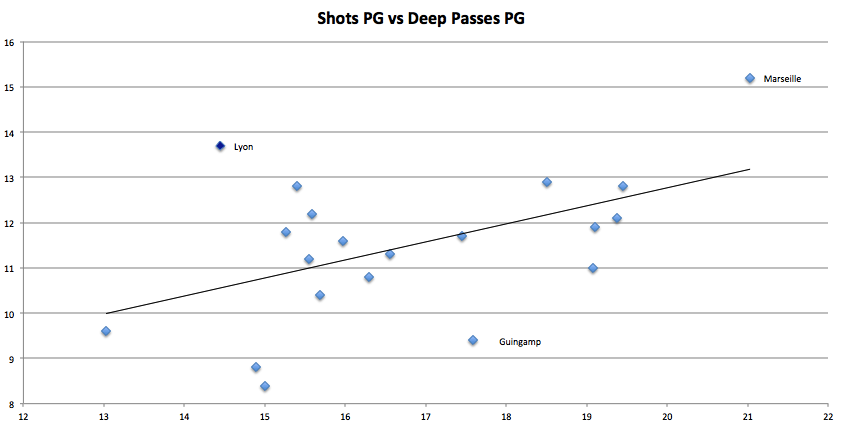 Lyon only passed the ball deep (within 25 yards of goal) 14 times per game, 2nd-fewest in Ligue 1. They turned those rare forays into the 2nd most shots in the league, a nod to their excellent attacking talent and the main reason they finished in second and were able to hold onto their best players. They were set to add one of Ligue 1’s best players in Clement Grenier after he essentially missed last year due to injury, but he tore a tendon in a friendly and is out for 4 months. In his 361 minutes last season, Grenier completed more deep passes per 90 than any other Ligue 1 player. Lyon can’t quite connect the excellent midfield of Gonalons and Ferri to Fekir, Lacazzette and N’Jie up top as seen by their completion map:
Lyon only passed the ball deep (within 25 yards of goal) 14 times per game, 2nd-fewest in Ligue 1. They turned those rare forays into the 2nd most shots in the league, a nod to their excellent attacking talent and the main reason they finished in second and were able to hold onto their best players. They were set to add one of Ligue 1’s best players in Clement Grenier after he essentially missed last year due to injury, but he tore a tendon in a friendly and is out for 4 months. In his 361 minutes last season, Grenier completed more deep passes per 90 than any other Ligue 1 player. Lyon can’t quite connect the excellent midfield of Gonalons and Ferri to Fekir, Lacazzette and N’Jie up top as seen by their completion map: 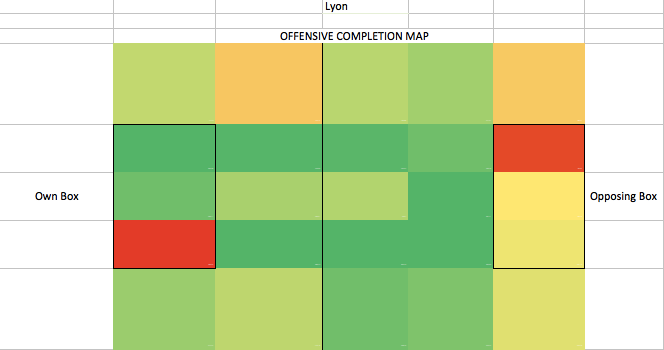 Grenier fits the team like a glove but now it will be up to someone like Rachid Ghezzal, who struggled last season, to get the ball forward more. New signing Beauvue from Guingamp is not that type of player, he scored goals last year but completed passes in the 4th percentile. He will be the 4th best forward Lyon has.
Grenier fits the team like a glove but now it will be up to someone like Rachid Ghezzal, who struggled last season, to get the ball forward more. New signing Beauvue from Guingamp is not that type of player, he scored goals last year but completed passes in the 4th percentile. He will be the 4th best forward Lyon has.  The bookies like Lyon as the 2nd best team behind PSG but I’m not sold. They finished 4th in expected goals rating last season and while they bring back their core, this is still a fragile team that over-performed last season.
The bookies like Lyon as the 2nd best team behind PSG but I’m not sold. They finished 4th in expected goals rating last season and while they bring back their core, this is still a fragile team that over-performed last season. 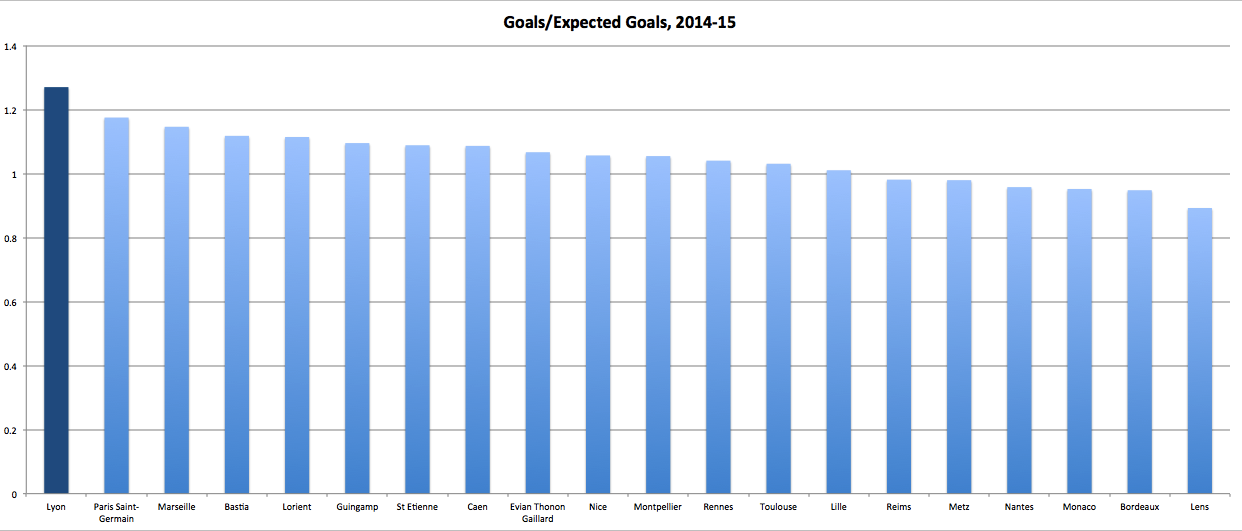 It's hard to picture the same amount of goals scored without Grenier returning and hitting top-form immediately in December. I'd put them under 50% to finish top 3. Anything short of that will be a disaster that could see their stars leave. It’s an enormous season for Lyon as they attempt to build a long-term home near the top of the table. 3. Monaco Monaco aren't the most attractive side but at the least you should admire them from afar as a well-put together squad, which is seen clearly from their passing maps:
It's hard to picture the same amount of goals scored without Grenier returning and hitting top-form immediately in December. I'd put them under 50% to finish top 3. Anything short of that will be a disaster that could see their stars leave. It’s an enormous season for Lyon as they attempt to build a long-term home near the top of the table. 3. Monaco Monaco aren't the most attractive side but at the least you should admire them from afar as a well-put together squad, which is seen clearly from their passing maps: 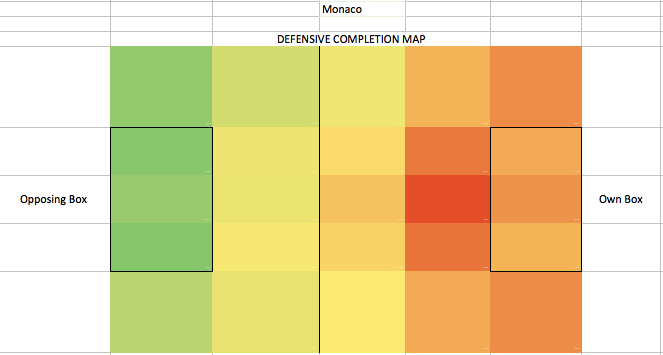
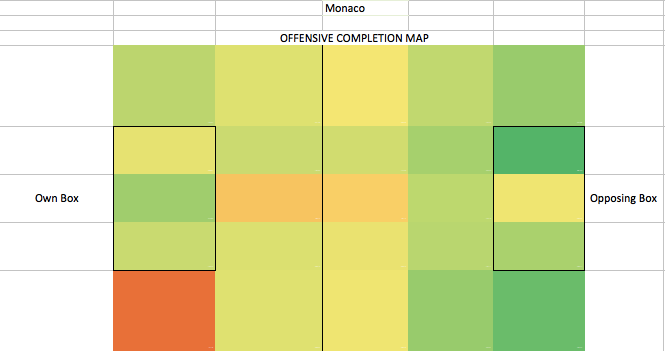 The potential to become a European power through heavy spending is still here, though on the back-burner currently. For now they are still a well-run, smart and dangerous club, seen on the pitch and on the transfer market. Monaco bought very wisely with Adama Traore from Lille. As a 20-year old at Lille last year, Traore wasn’t far off the pace of Joao Moutinho, who looks like he is about to leave.
The potential to become a European power through heavy spending is still here, though on the back-burner currently. For now they are still a well-run, smart and dangerous club, seen on the pitch and on the transfer market. Monaco bought very wisely with Adama Traore from Lille. As a 20-year old at Lille last year, Traore wasn’t far off the pace of Joao Moutinho, who looks like he is about to leave. 
 Another interesting and very smart buy is Thomas Lemar from Caen. The 19-year old profiles as a very interesting attacking midfielder for the future:
Another interesting and very smart buy is Thomas Lemar from Caen. The 19-year old profiles as a very interesting attacking midfielder for the future:  He might be too young to get many minutes this year for a top team, but is one to watch in the years to come. El Shaarawy, Carillo, and co, will likely replace what Monaco is losing up front. Kondogbia remains the question, can they replace his midfield quality? They should do it well enough to finish 2nd in the league, where they have finished in xG each of the past two seasons. Arguably the most important part of the season is right now, as they try to make the group stages of the Champions League and keep the revenue coming in. Others to watch, depending on your tastes If you like watching great players: PSG. Last season they didn’t look fully focused in domestic competitions and struggled for most of the season. They won the treble. They will win the league again but I’d recommend watching them mainly in the Champions League. There are two weaknesses to watch and see if they fix. Both involved the back of the PSG defense. Teams entered the box with the shortest average pass length and had the highest completion % inside the box. This is PSG's chart of pass origins to completions inside the box (goals are light green and large circle, shots bright blue medium circle, completions smallest circle):
He might be too young to get many minutes this year for a top team, but is one to watch in the years to come. El Shaarawy, Carillo, and co, will likely replace what Monaco is losing up front. Kondogbia remains the question, can they replace his midfield quality? They should do it well enough to finish 2nd in the league, where they have finished in xG each of the past two seasons. Arguably the most important part of the season is right now, as they try to make the group stages of the Champions League and keep the revenue coming in. Others to watch, depending on your tastes If you like watching great players: PSG. Last season they didn’t look fully focused in domestic competitions and struggled for most of the season. They won the treble. They will win the league again but I’d recommend watching them mainly in the Champions League. There are two weaknesses to watch and see if they fix. Both involved the back of the PSG defense. Teams entered the box with the shortest average pass length and had the highest completion % inside the box. This is PSG's chart of pass origins to completions inside the box (goals are light green and large circle, shots bright blue medium circle, completions smallest circle): 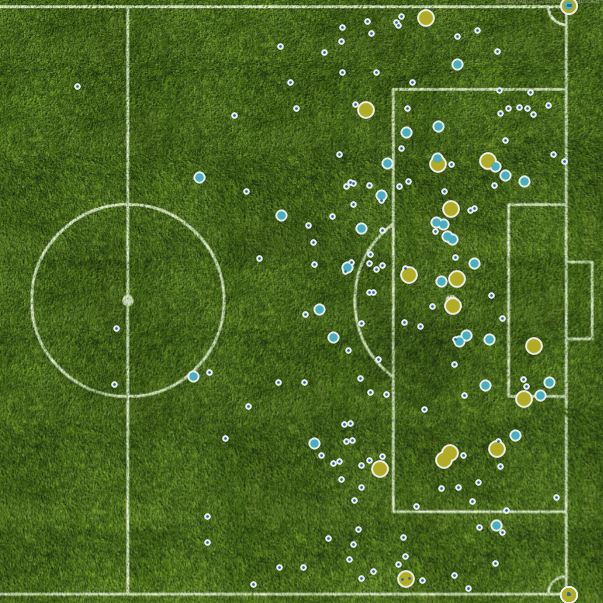 compared with Bordeaux's much more spread out map
compared with Bordeaux's much more spread out map 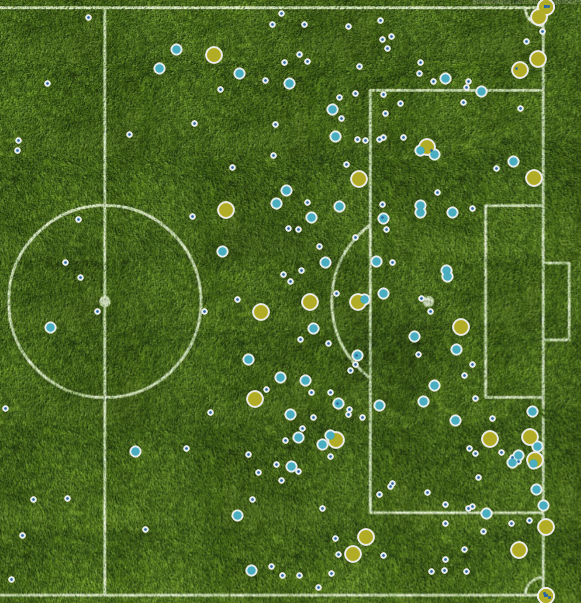 Now teams don't get to the box near enough for this to cost them the league (though it almost did last season) but it's a problem that needs to be fixed to challenge in the Champions League. It is interesting to note zero goals or shots came from passes starting on the byline against PSG compared to the large amount from Bordeaux, especially from their left side. That can't be good news for Diego Contento, Bordeaux's most-used left-back. If you enjoy absolutely stifling defenses like Atletico Madrid: St Etienne is your team to watch. Deep passes turned into shots at a rate 35% below league average (saving at least 5 or 6 goals), and as you can see passes were tough to complete everywhere against them.
Now teams don't get to the box near enough for this to cost them the league (though it almost did last season) but it's a problem that needs to be fixed to challenge in the Champions League. It is interesting to note zero goals or shots came from passes starting on the byline against PSG compared to the large amount from Bordeaux, especially from their left side. That can't be good news for Diego Contento, Bordeaux's most-used left-back. If you enjoy absolutely stifling defenses like Atletico Madrid: St Etienne is your team to watch. Deep passes turned into shots at a rate 35% below league average (saving at least 5 or 6 goals), and as you can see passes were tough to complete everywhere against them. 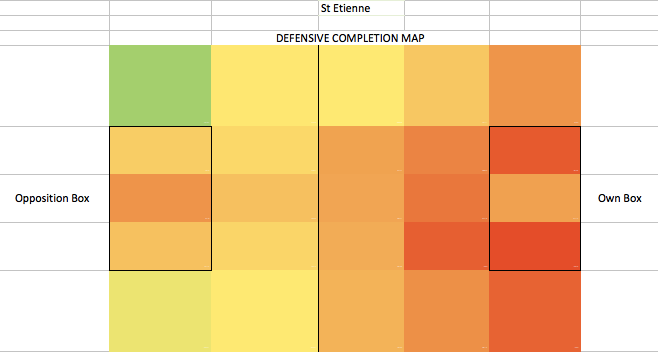
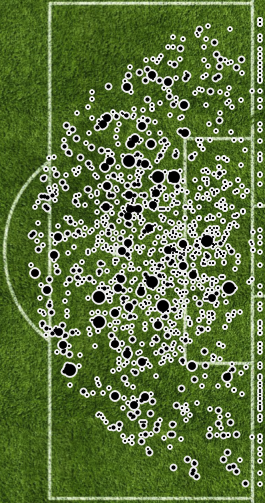 Pass into box map (from smallest to largest circles=incomplete, complete, shot, goal. Compare to Lille's below) The big worry is what happens if Max Gradel leaves. Gradel took 4.2 shots/90 while their next 4 attacking players combined took a total of 6.1. This was by far the highest "one-man attack" in the league. Romain Hamouma would be the likely replacement, you can see the differences between the two in their player cards:
Pass into box map (from smallest to largest circles=incomplete, complete, shot, goal. Compare to Lille's below) The big worry is what happens if Max Gradel leaves. Gradel took 4.2 shots/90 while their next 4 attacking players combined took a total of 6.1. This was by far the highest "one-man attack" in the league. Romain Hamouma would be the likely replacement, you can see the differences between the two in their player cards: 
 If you want a similar team, but don't want to be one of those St Etienne glory-hunters and want to cheer on an under-dog, go with Nantes. Nantes forced opponents wide more than any other team and allowed the lowest shot tempo in the league. They set out to disrupt opponents and do it excellently. If you want to watch a team who had the most glaring weakness last year, watch Lille. Their back-line conceded almost 40% more shots than would be expected from the passes they faced (http://statsbomb.com/2015/07/converting-dangerous-passing-into-shots/). Lille defensive passes into box map, compare with St Etienne above (from smallest to largest=incomplete, complete, shot, goal).
If you want a similar team, but don't want to be one of those St Etienne glory-hunters and want to cheer on an under-dog, go with Nantes. Nantes forced opponents wide more than any other team and allowed the lowest shot tempo in the league. They set out to disrupt opponents and do it excellently. If you want to watch a team who had the most glaring weakness last year, watch Lille. Their back-line conceded almost 40% more shots than would be expected from the passes they faced (http://statsbomb.com/2015/07/converting-dangerous-passing-into-shots/). Lille defensive passes into box map, compare with St Etienne above (from smallest to largest=incomplete, complete, shot, goal). 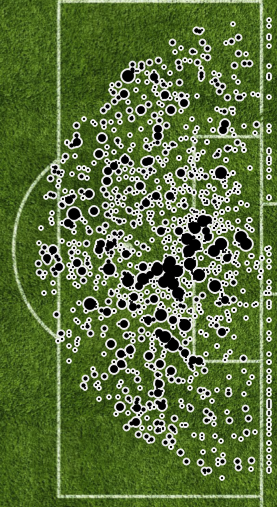 And if you want to watch a team concede possession, then rush forward wildly when they get the ball go with Caen. They aren't particularly good at anything else, but at least they get forward quickly and shoot. In a league where that's a rarity, it stands out.
And if you want to watch a team concede possession, then rush forward wildly when they get the ball go with Caen. They aren't particularly good at anything else, but at least they get forward quickly and shoot. In a league where that's a rarity, it stands out. 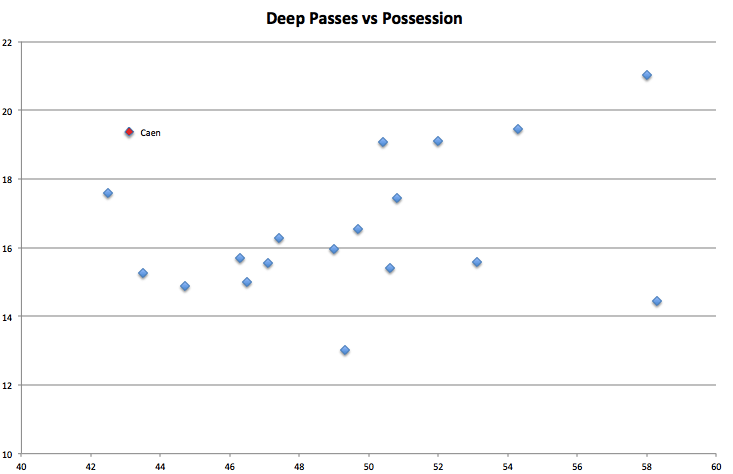
Top 6 Prediction 1. 2. 3. 4. 5. 6.
Players and Methodology There are player cards above and below. Here is an explanation for each of the categories. Dangerous completions is simply the number of completions per 90 minutes within 25 yards of goal. Shots is shots/90 minutes. Involvement is primarily how many completions they have and if the player completes more or fewer passes than the normal player on his team. Passer Rating is a pretty new stat and the one that I think has the potential for improving how we understand players offensive contribution the most. It is a comparison of their completion % to what an average players completion % would be, given where passes begin and end. For example, a player making a pass that starts 79 yards from goal and ends up 85 yards from goal is expected to complete it 98% of the time. So if that is all he attempted under normal completion % numbers he could wind up with a 90% completion rate and it would look great. Using passer rating, we see he's actually well behind what an average player would do and would have a 92 Passer Rating, which would be bottom of the barrel for defensive midfielders.
There are many ways to improve this, but I believe it is a key step forward over completion % and a very useful way to tell who really is a good passer of the ball. Interceptions, tackles and dribbles should all be familiar to you by now. Pass Defense and Shot Stopping are new defensive stats I am trying out here. They are a reflection of the team's effectiveness at stopping pass completions in that players area. So a defensive midfielder with a Pass Defense rating of 0 means that his team is average at allowing completions in the area most patrolled by defensive mids, anything positive is above average. Shot stopping is how effective that team is at stopping deep passes from being converted into shots. These stats can reflect the team and tactics more than the specific player's skills, but add needed context and until I can separate individual player defense out from the team, will be added to defensive player cards. All stats are per 90 and then adjusted for the average at the position played. 2.1 shots might rate as near the top for a midfielder but average for a forward, for example. Players are generally ranked overall according to some combination of those stats, with adjustments here and there for minutes played or standing out well above teammates.
The All-Passing Team Here's a quick chart of the best passing players returning to the league: 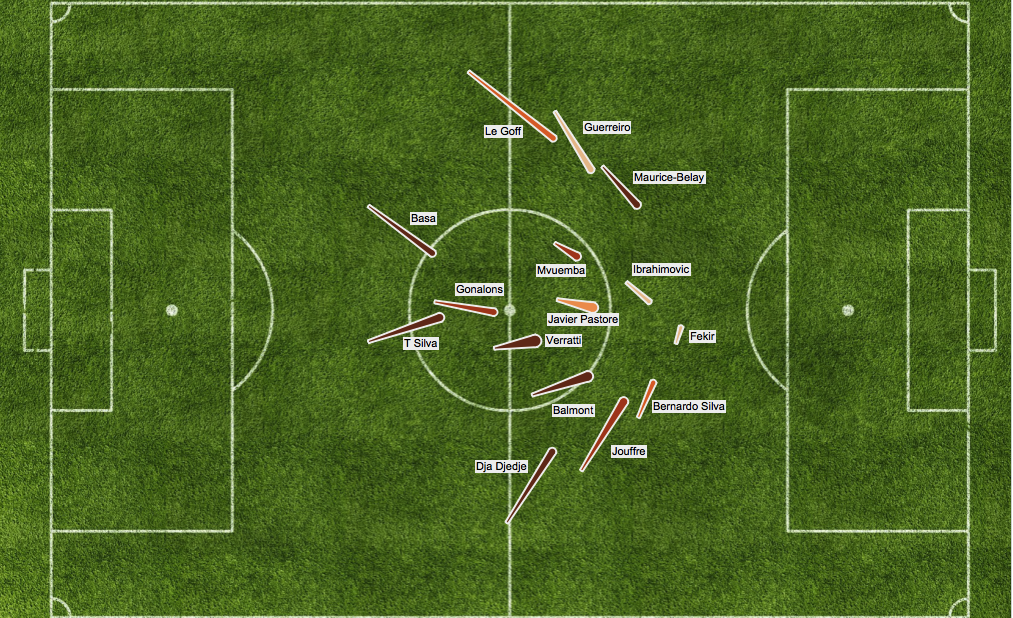 The color of the path is their passer rating (darker=higher) with the thickness reflecting their involvement. The path starts and ends where the average pass is made. Top 5 Attacking Midfielders: Javier Pastore-26, PSG
The color of the path is their passer rating (darker=higher) with the thickness reflecting their involvement. The path starts and ends where the average pass is made. Top 5 Attacking Midfielders: Javier Pastore-26, PSG  Pastore attacking completion map. (dots are at completion destination, darker color=closer to goal the pass got team, medium circle size=shot, largest circle size=goal)
Pastore attacking completion map. (dots are at completion destination, darker color=closer to goal the pass got team, medium circle size=shot, largest circle size=goal) 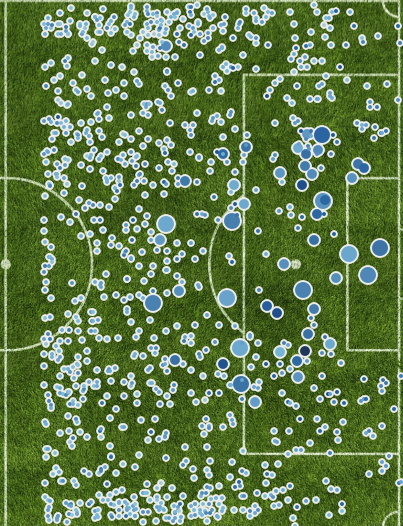 Doesn't shoot much but plays the ball anywhere in the attacking half with great skill. Nicolas Maurice-Belay-30, Bordeaux
Doesn't shoot much but plays the ball anywhere in the attacking half with great skill. Nicolas Maurice-Belay-30, Bordeaux 
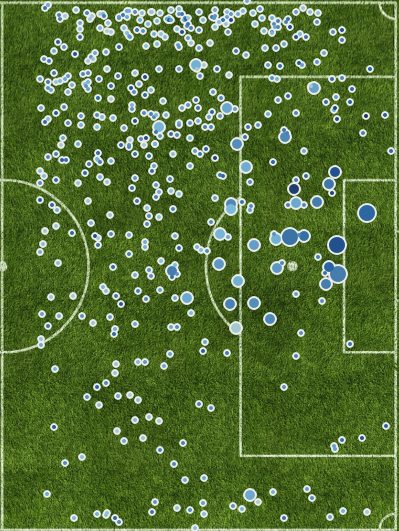 Strangely limited to just 1631 minutes in Ligue 1 last year, Maurice-Belay's passer rating of 108 leads all attacking midfielders and forwards. The average attacking midfielder has a passer rating of 94 which means that Maurice-Belay is saving you handfuls of possessions per game with his accuracy. As you can see from his pass map and player card above, he isn't only great at playing safe passes, he completes the ball deep better than most as well. Lucas Moura-22, PSG Sofiane Boufal-21, Lille
Strangely limited to just 1631 minutes in Ligue 1 last year, Maurice-Belay's passer rating of 108 leads all attacking midfielders and forwards. The average attacking midfielder has a passer rating of 94 which means that Maurice-Belay is saving you handfuls of possessions per game with his accuracy. As you can see from his pass map and player card above, he isn't only great at playing safe passes, he completes the ball deep better than most as well. Lucas Moura-22, PSG Sofiane Boufal-21, Lille 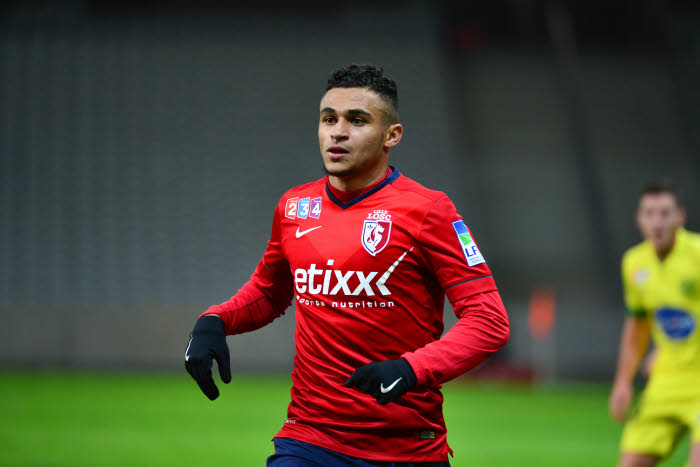 Walib Mesloud-29, Lorient After playing his entire career in Ligue 2, the Algerian international made his mark on the top division with an excellent season playing for a Lorient team with subpar strikers in front of him. You can see the ratio of passes that were completed inside the box and turned into shots is significantly lower than Pastore's or Maurice-Belay's.
Walib Mesloud-29, Lorient After playing his entire career in Ligue 2, the Algerian international made his mark on the top division with an excellent season playing for a Lorient team with subpar strikers in front of him. You can see the ratio of passes that were completed inside the box and turned into shots is significantly lower than Pastore's or Maurice-Belay's. 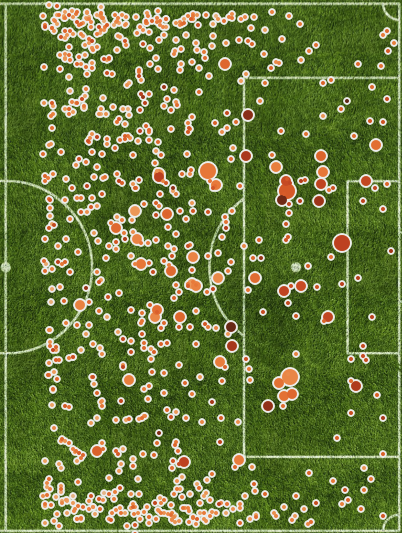 Youngsters to watch Henri Saivet-23, Bordeaux Abdoulaye Doucoure-22, Rennes
Youngsters to watch Henri Saivet-23, Bordeaux Abdoulaye Doucoure-22, Rennes 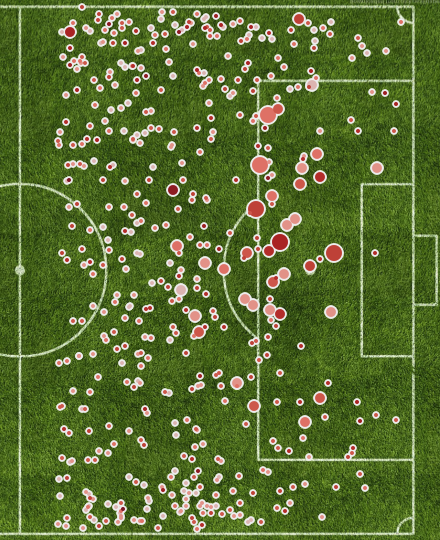 Repeatedly finds receivers on the edge of the box but not further in, his lack of vision or a failure on the part of Toivonen and Habibou, the Rennes strikeforce, to get deep enough? Adrien Regattin-23, Toulouse Romain Alessandrini-26, Marseille
Repeatedly finds receivers on the edge of the box but not further in, his lack of vision or a failure on the part of Toivonen and Habibou, the Rennes strikeforce, to get deep enough? Adrien Regattin-23, Toulouse Romain Alessandrini-26, Marseille  Bernardo Silva-20, Monaco Top Forwards: Zlatan Ibrahimovic-33, PSG Nabil Fekir-22, Lyon Shot map (blue circles=goals)
Bernardo Silva-20, Monaco Top Forwards: Zlatan Ibrahimovic-33, PSG Nabil Fekir-22, Lyon Shot map (blue circles=goals) 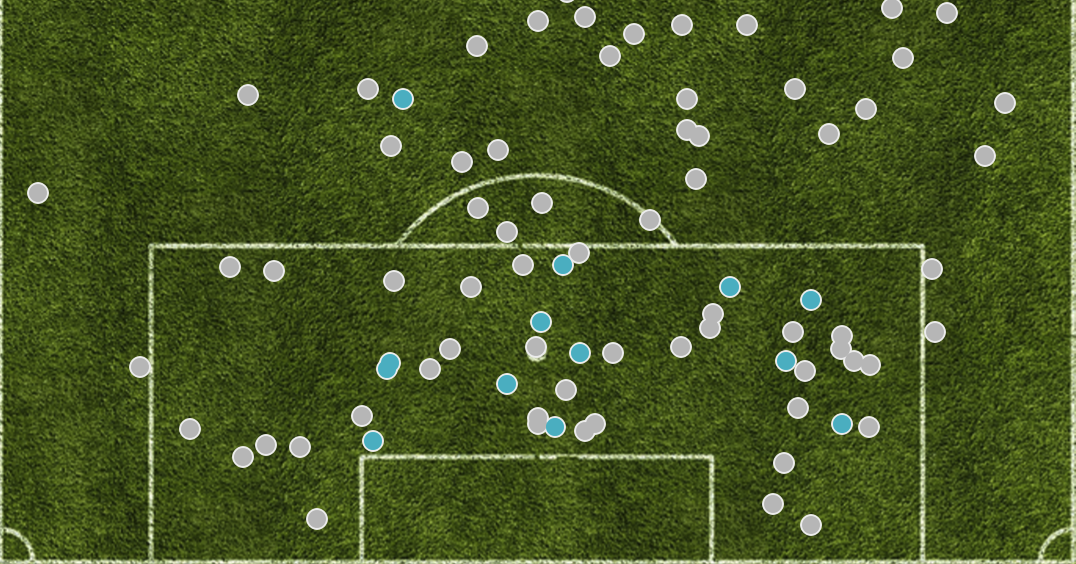 Alexandre Lacazzette-24, Lyon
Alexandre Lacazzette-24, Lyon 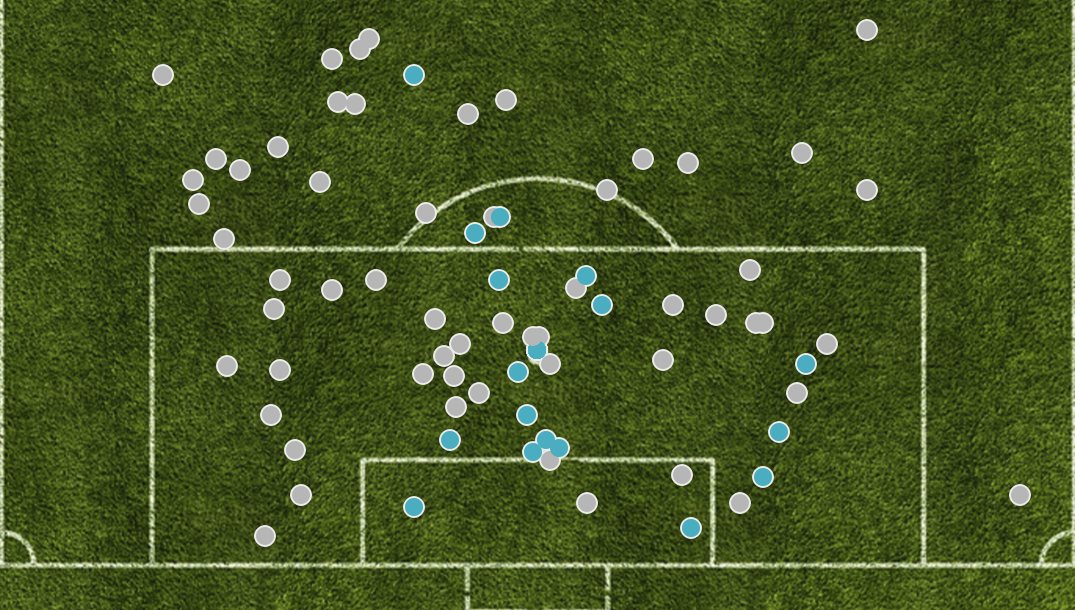 Maybe Lacazzette should stop shooting from the right side of goal? 0/23 on shots there last season. Edinson Cavani-28, PSG Youngsters to watch Clinton N’Jie-21, Lyon
Maybe Lacazzette should stop shooting from the right side of goal? 0/23 on shots there last season. Edinson Cavani-28, PSG Youngsters to watch Clinton N’Jie-21, Lyon 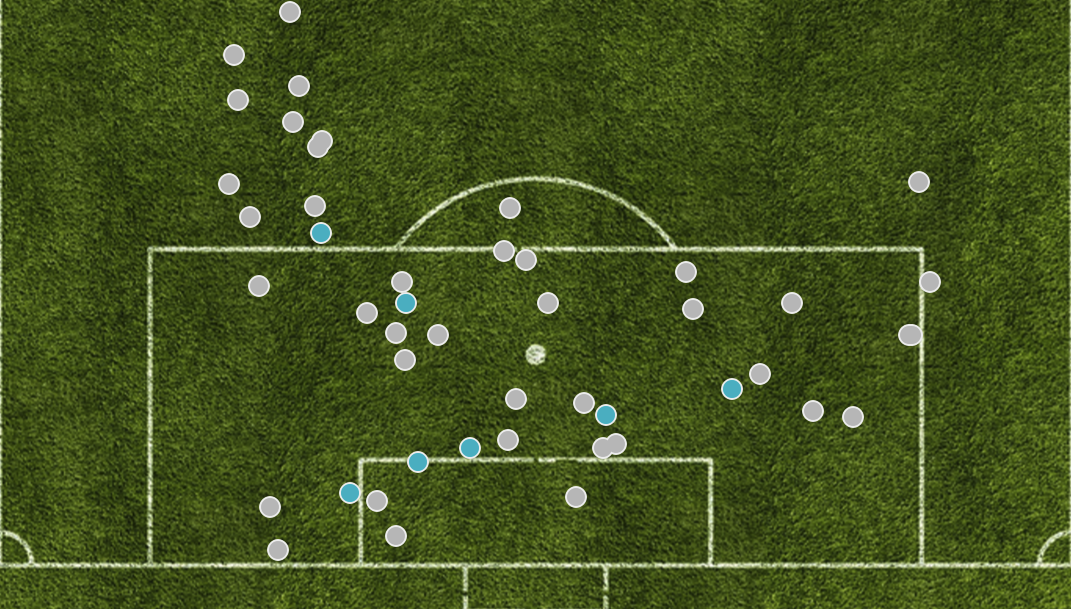 N'Jie only seems comfortable taking long shots from the right side of goal. Diego Rolan-22, Bordeaux Michy Batshuayi-21, Marseille Alassane Plea-22, Nice Anthony Martial-19, Monaco
N'Jie only seems comfortable taking long shots from the right side of goal. Diego Rolan-22, Bordeaux Michy Batshuayi-21, Marseille Alassane Plea-22, Nice Anthony Martial-19, Monaco 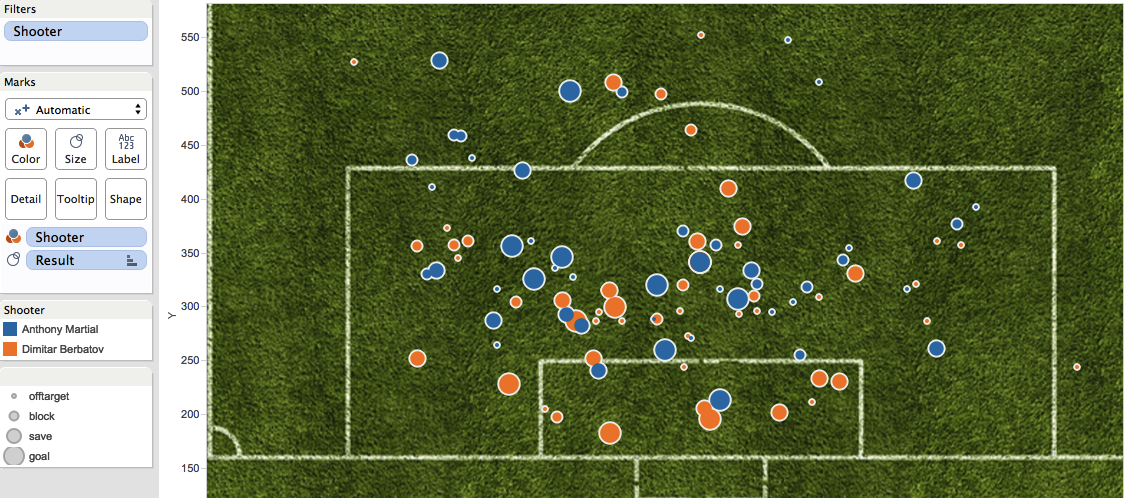 Martial doesn't get deep and get those tap-in changes that Berbatov did quite yet. Top 5 Midfielders: Going forward: Marco Verratti-22, PSG
Martial doesn't get deep and get those tap-in changes that Berbatov did quite yet. Top 5 Midfielders: Going forward: Marco Verratti-22, PSG 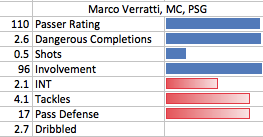 Verratti forward completion map
Verratti forward completion map 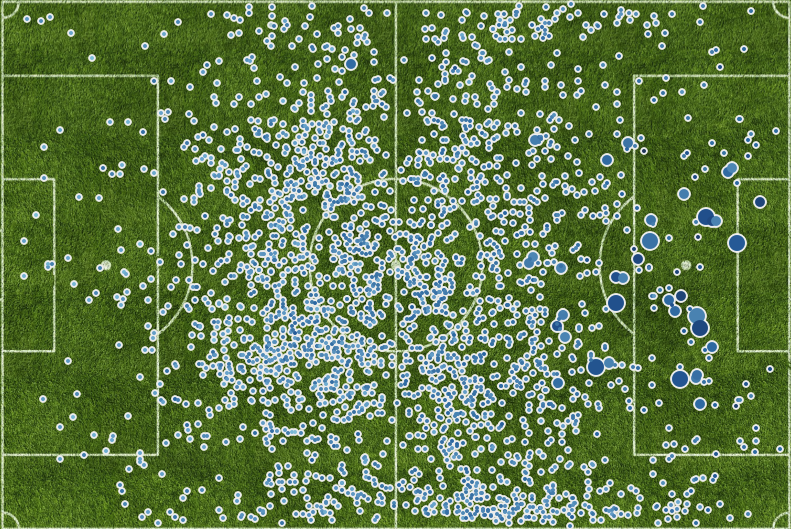 Looks like a team unto himself in the middle of the pitch and also finds ways to get the ball forward into dangerous spots. Clement Grenier-24, Lyon Florent Balmont-35, Lille Top 3 Defensively Maxime Gonalons-26, Lyon
Looks like a team unto himself in the middle of the pitch and also finds ways to get the ball forward into dangerous spots. Clement Grenier-24, Lyon Florent Balmont-35, Lille Top 3 Defensively Maxime Gonalons-26, Lyon 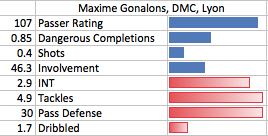 Tiemoue Bakayoko-20, Monaco
Tiemoue Bakayoko-20, Monaco 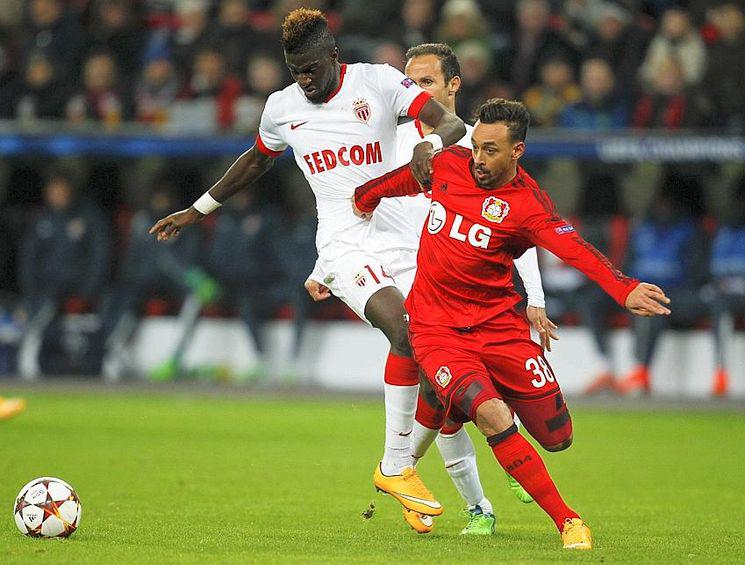
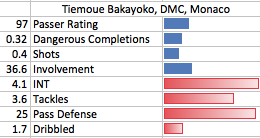 Jeremy Toulalan-31, Monaco Youngsters to watch: Adama Traore-20, Monaco Adrien Rabiot-20, PSG Andre Biyogo Poko-22, Bordeaux
Jeremy Toulalan-31, Monaco Youngsters to watch: Adama Traore-20, Monaco Adrien Rabiot-20, PSG Andre Biyogo Poko-22, Bordeaux 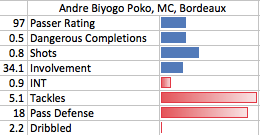
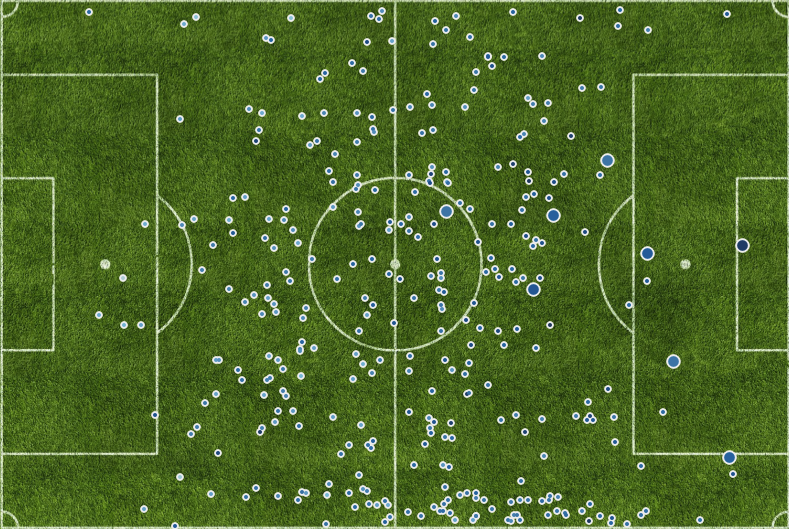 Not quite Verratti yet on the offensive side. His forward passes generally get to the edge of the final third at best. He did get forward and score an open-play goal this week in their Europa League game. Albert Rafetraniaina-18, Nice
Not quite Verratti yet on the offensive side. His forward passes generally get to the edge of the final third at best. He did get forward and score an open-play goal this week in their Europa League game. Albert Rafetraniaina-18, Nice 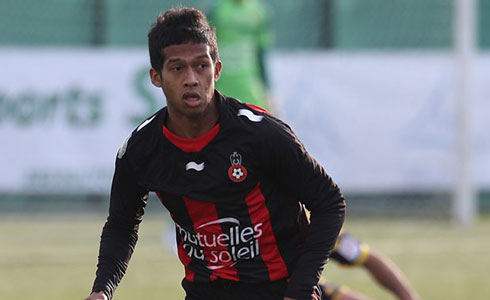
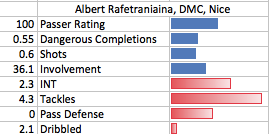 He's from Madagascar if you were wondering about the name. Fullbacks Top 3 Going Forward Raphael Guerreiro-21, Lorient Brice Dja Djedje-24, Marseille Layvin Kurzawa-22, Monaco
He's from Madagascar if you were wondering about the name. Fullbacks Top 3 Going Forward Raphael Guerreiro-21, Lorient Brice Dja Djedje-24, Marseille Layvin Kurzawa-22, Monaco 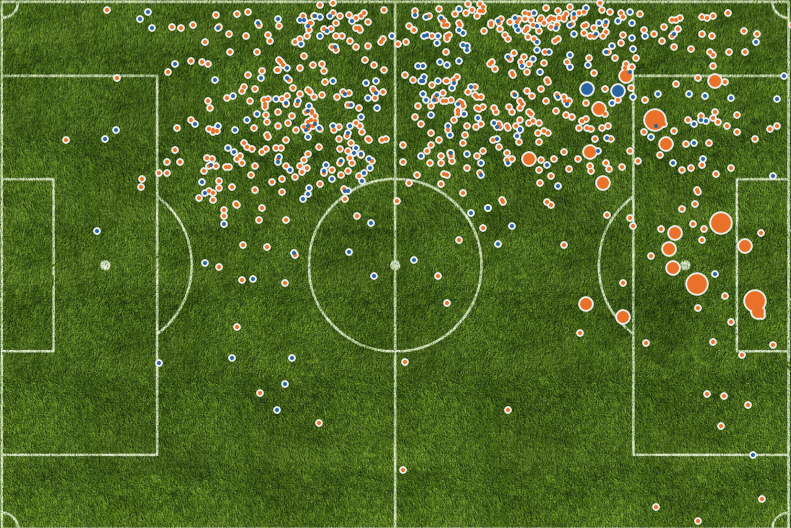 The attacking difference between Kurzawa, orange dots, and Echiejile (the other Monaco left-back with blue dots) is readily apparent here. Youngsters to watch Serge Aurier-22, PSG Fabinho-21, Monaco Marcel Tisserand-22, Toulouse
The attacking difference between Kurzawa, orange dots, and Echiejile (the other Monaco left-back with blue dots) is readily apparent here. Youngsters to watch Serge Aurier-22, PSG Fabinho-21, Monaco Marcel Tisserand-22, Toulouse 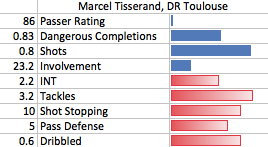 Top 3 Center Backs Loic Perrin-29, St Etienne
Top 3 Center Backs Loic Perrin-29, St Etienne 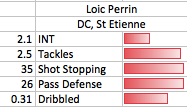 Thiago Silva-30, PSG Moustapha Bayal Sall-29, St Etienne Others of interest Wallace-20, Monaco Aymen Abdennour-25, Monaco
Thiago Silva-30, PSG Moustapha Bayal Sall-29, St Etienne Others of interest Wallace-20, Monaco Aymen Abdennour-25, Monaco 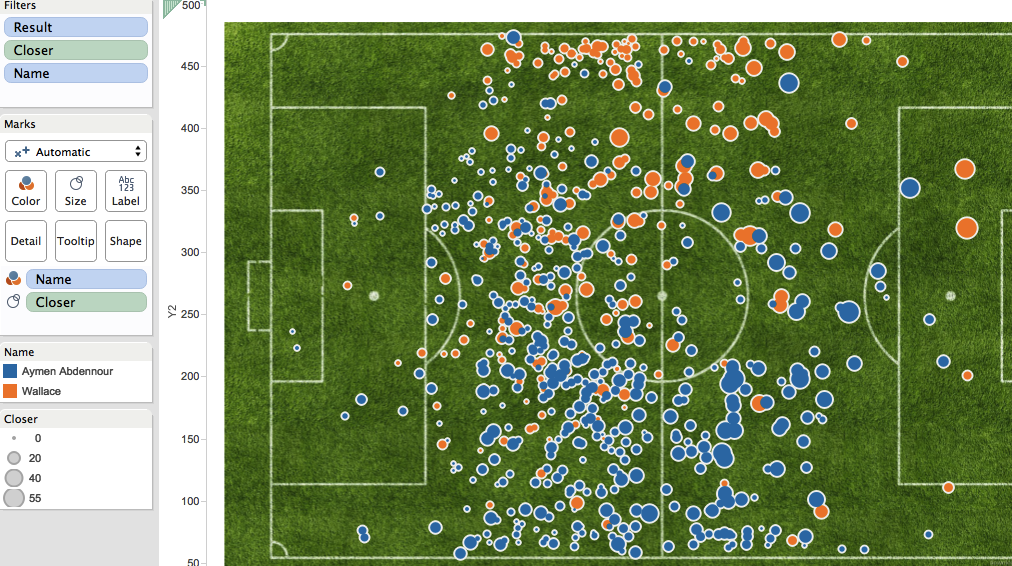 This chart shows a reason why Abdennour is interesting Barcelona. Compared with Wallace (who has a slightly passer rating) Abdennour shows a much greater range of passing. Wallace tends to feed the ball to one spot on the left side just shy of the halfway line, Abdennour has significantly more aggressive passes toward the center of the pitch in the opposition half. Final Words Now that you know all this, you and me both have more reason than ever before to watch Ligue 1. Join with me in following the perfect secondary league this season. Comments, tweets, questions, criticisms always welcome here or on twitter @Saturdayoncouch. Season starts on Friday with Lille-PSG.
This chart shows a reason why Abdennour is interesting Barcelona. Compared with Wallace (who has a slightly passer rating) Abdennour shows a much greater range of passing. Wallace tends to feed the ball to one spot on the left side just shy of the halfway line, Abdennour has significantly more aggressive passes toward the center of the pitch in the opposition half. Final Words Now that you know all this, you and me both have more reason than ever before to watch Ligue 1. Join with me in following the perfect secondary league this season. Comments, tweets, questions, criticisms always welcome here or on twitter @Saturdayoncouch. Season starts on Friday with Lille-PSG. 

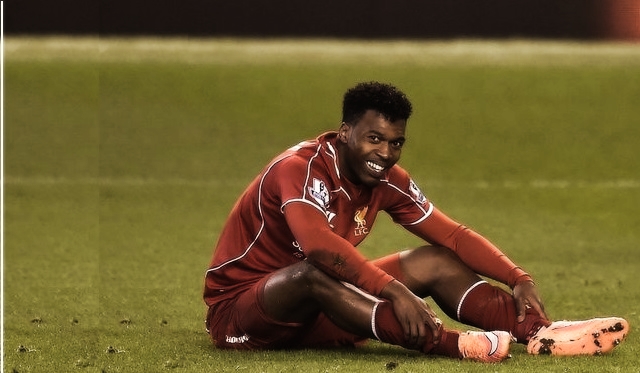
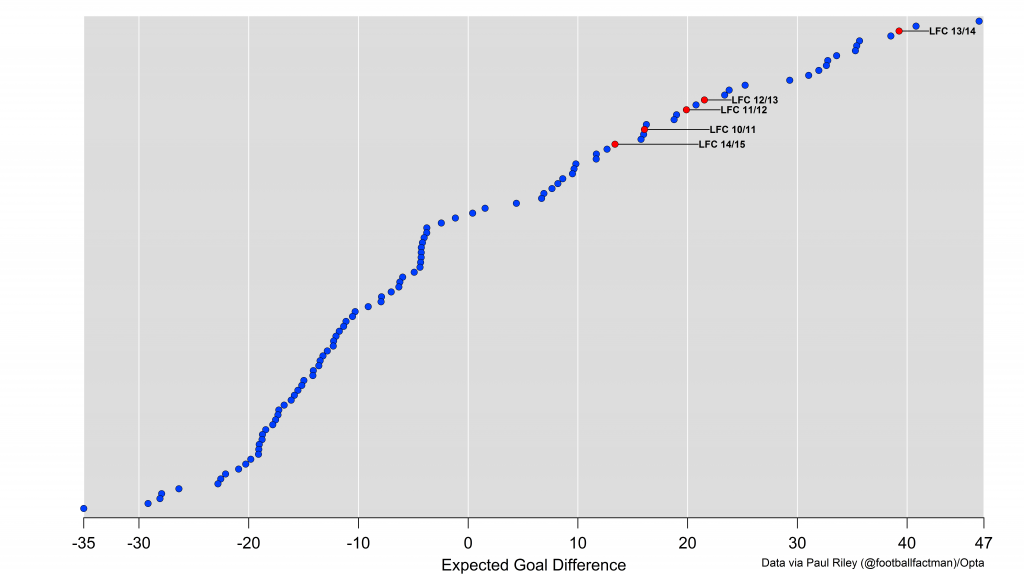
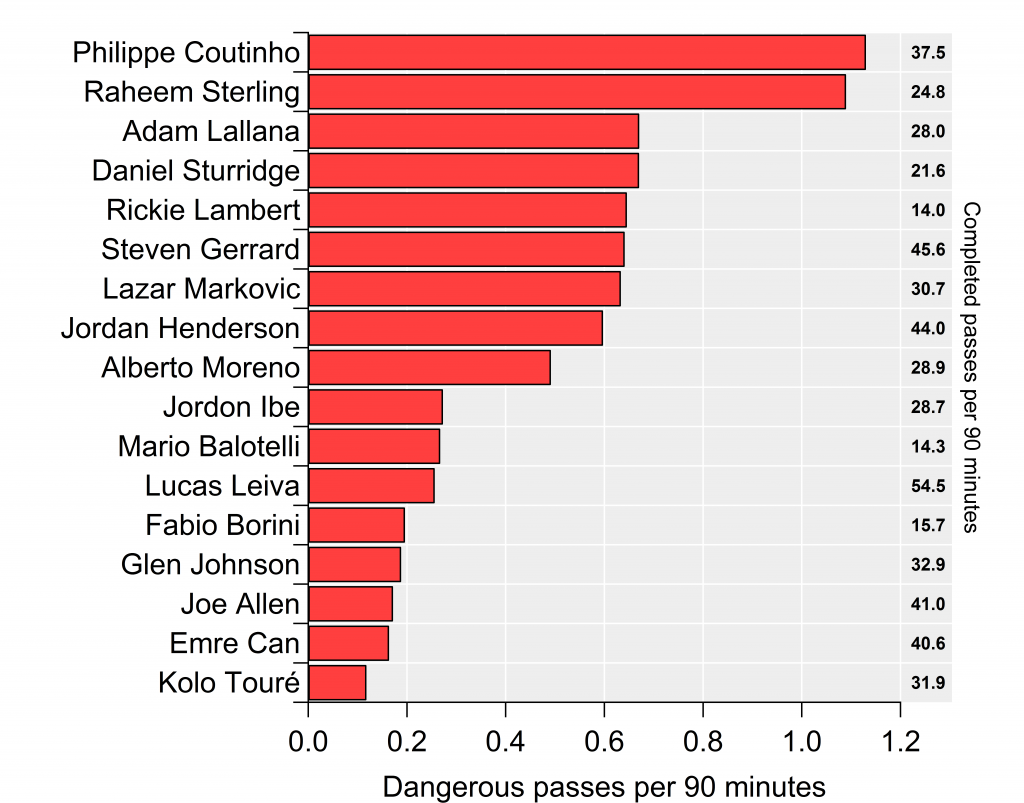
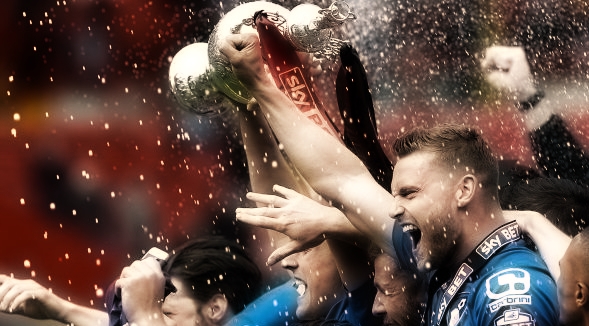
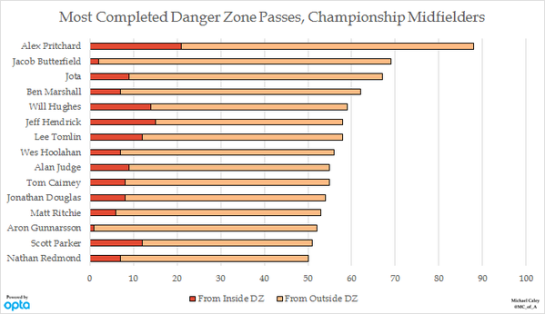 The bookies' odds seem harsh given decent, if unspectacular, shots numbers and Butterfield's creativity will be crucial for Huddersfield in proving them wrong this.
The bookies' odds seem harsh given decent, if unspectacular, shots numbers and Butterfield's creativity will be crucial for Huddersfield in proving them wrong this. 
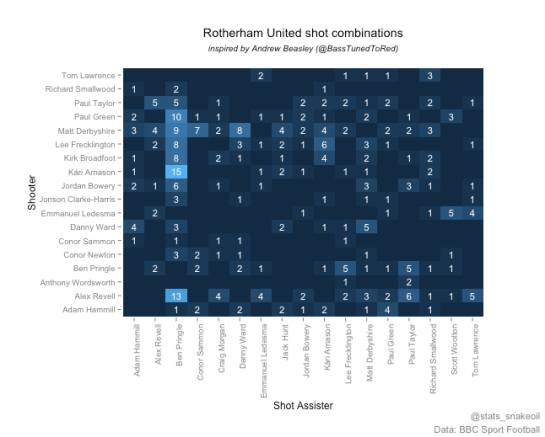
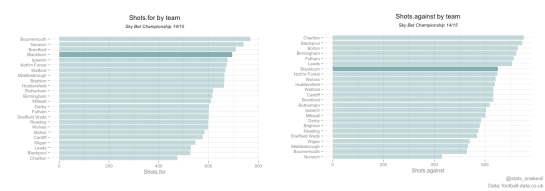
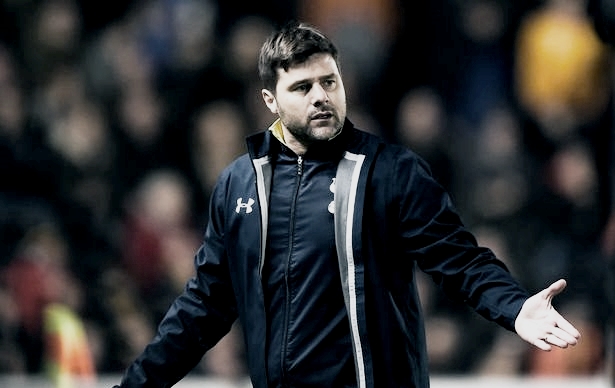
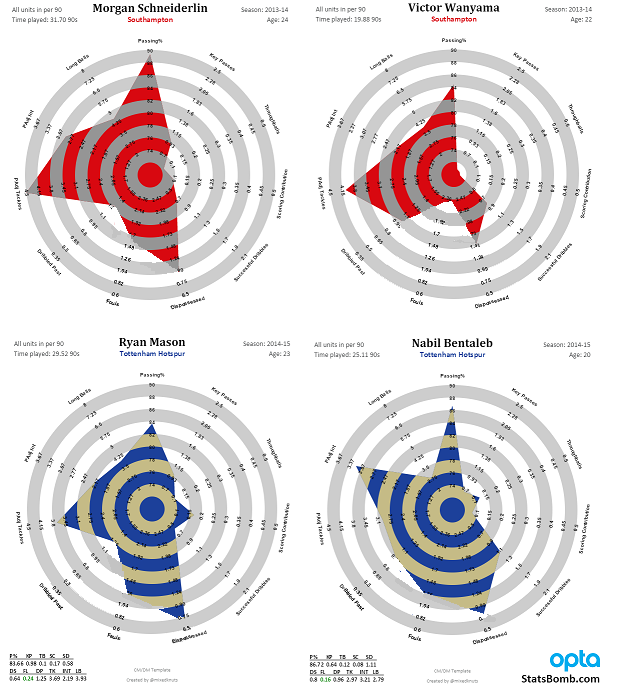
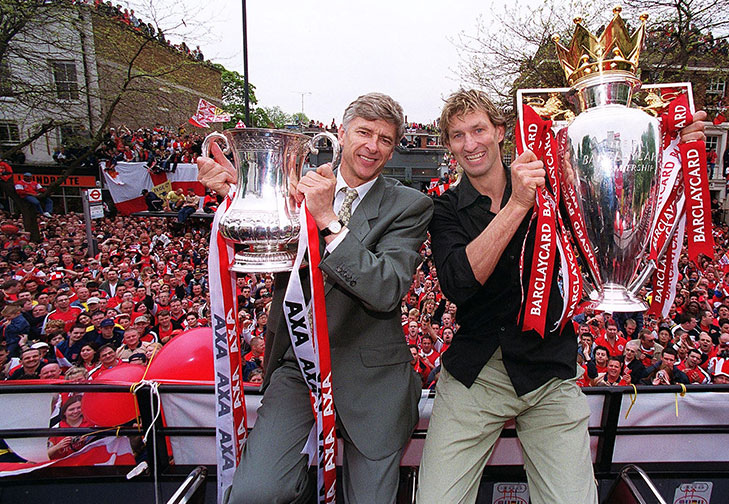
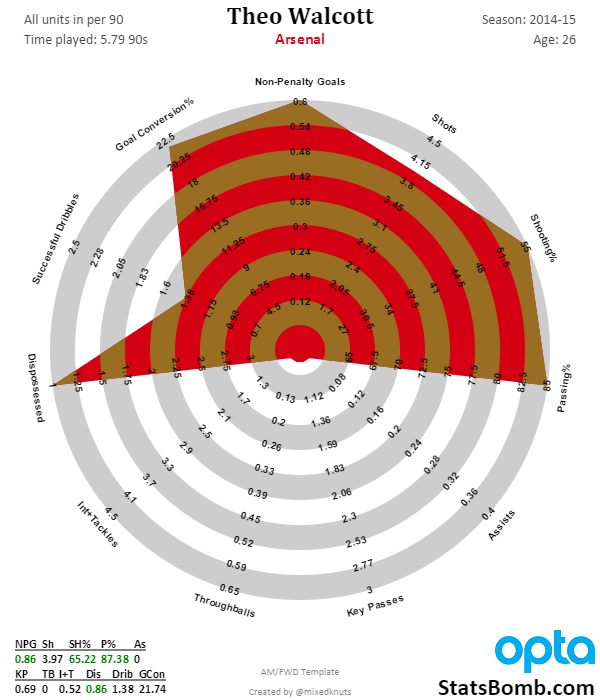
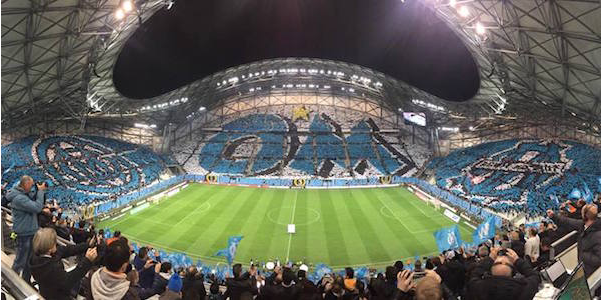

 The names will be new but the style will remain Bielstastic as ever as he returns to the bench. Last year only Marseille pressed high, hard and wide:
The names will be new but the style will remain Bielstastic as ever as he returns to the bench. Last year only Marseille pressed high, hard and wide:  Getting the ball back from the press immediately transitions into shooting quickly. Marseille led the league in shots and deep passes by a wide margin and shot the ball very quickly for a team who has it a lot.
Getting the ball back from the press immediately transitions into shooting quickly. Marseille led the league in shots and deep passes by a wide margin and shot the ball very quickly for a team who has it a lot.  Unsurprisingly, it doesn’t look like Marseille will be backing off the press. Ocampos (in permanently from Monaco) and N’Koudou ranked among the top 5 forward players in defensive actions in Ligue 1 last year and will be tasked with replacing and improving upon Ayew’s hard work at the tip of the spear. Diaby was an excellent defender many years ago and would seem to be a great fit right where Marseille need it, but can’t be counted on for 1500+ minutes yet. Personally, it would be one of the stories of the year if he can regain his form.
Unsurprisingly, it doesn’t look like Marseille will be backing off the press. Ocampos (in permanently from Monaco) and N’Koudou ranked among the top 5 forward players in defensive actions in Ligue 1 last year and will be tasked with replacing and improving upon Ayew’s hard work at the tip of the spear. Diaby was an excellent defender many years ago and would seem to be a great fit right where Marseille need it, but can’t be counted on for 1500+ minutes yet. Personally, it would be one of the stories of the year if he can regain his form.  One of the big problems was they ran out of gas at the end of games and then late in the season, w
One of the big problems was they ran out of gas at the end of games and then late in the season, w 2. Lyon Efficiency, efficiency, efficiency. It's easy to picture Lyon as a swashbuckling, attacking team battling PSG for the title behind talented forwards like Fekir and Lacazette but the stats do not bear that out.
2. Lyon Efficiency, efficiency, efficiency. It's easy to picture Lyon as a swashbuckling, attacking team battling PSG for the title behind talented forwards like Fekir and Lacazette but the stats do not bear that out.  Lyon only passed the ball deep (within 25 yards of goal) 14 times per game, 2nd-fewest in Ligue 1. They turned those rare forays into the 2nd most shots in the league, a nod to their excellent attacking talent and the main reason they finished in second and were able to hold onto their best players. They were set to add one of Ligue 1’s best players in Clement Grenier after he essentially missed last year due to injury, but he tore a tendon in a friendly and is out for 4 months. In his 361 minutes last season, Grenier completed more deep passes per 90 than any other Ligue 1 player. Lyon can’t quite connect the excellent midfield of Gonalons and Ferri to Fekir, Lacazzette and N’Jie up top as seen by their completion map:
Lyon only passed the ball deep (within 25 yards of goal) 14 times per game, 2nd-fewest in Ligue 1. They turned those rare forays into the 2nd most shots in the league, a nod to their excellent attacking talent and the main reason they finished in second and were able to hold onto their best players. They were set to add one of Ligue 1’s best players in Clement Grenier after he essentially missed last year due to injury, but he tore a tendon in a friendly and is out for 4 months. In his 361 minutes last season, Grenier completed more deep passes per 90 than any other Ligue 1 player. Lyon can’t quite connect the excellent midfield of Gonalons and Ferri to Fekir, Lacazzette and N’Jie up top as seen by their completion map:  Grenier fits the team like a glove but now it will be up to someone like Rachid Ghezzal, who struggled last season, to get the ball forward more. New signing Beauvue from Guingamp is not that type of player, he scored goals last year but completed passes in the 4th percentile. He will be the 4th best forward Lyon has.
Grenier fits the team like a glove but now it will be up to someone like Rachid Ghezzal, who struggled last season, to get the ball forward more. New signing Beauvue from Guingamp is not that type of player, he scored goals last year but completed passes in the 4th percentile. He will be the 4th best forward Lyon has.  The bookies like Lyon as the 2nd best team behind PSG but I’m not sold. They finished 4th in expected goals rating last season and while they bring back their core, this is still a fragile team that over-performed last season.
The bookies like Lyon as the 2nd best team behind PSG but I’m not sold. They finished 4th in expected goals rating last season and while they bring back their core, this is still a fragile team that over-performed last season.  It's hard to picture the same amount of goals scored without Grenier returning and hitting top-form immediately in December. I'd put them under 50% to finish top 3. Anything short of that will be a disaster that could see their stars leave. It’s an enormous season for Lyon as they attempt to build a long-term home near the top of the table. 3. Monaco Monaco aren't the most attractive side but at the least you should admire them from afar as a well-put together squad, which is seen clearly from their passing maps:
It's hard to picture the same amount of goals scored without Grenier returning and hitting top-form immediately in December. I'd put them under 50% to finish top 3. Anything short of that will be a disaster that could see their stars leave. It’s an enormous season for Lyon as they attempt to build a long-term home near the top of the table. 3. Monaco Monaco aren't the most attractive side but at the least you should admire them from afar as a well-put together squad, which is seen clearly from their passing maps: 
 The potential to become a European power through heavy spending is still here, though on the back-burner currently. For now they are still a well-run, smart and dangerous club, seen on the pitch and on the transfer market. Monaco bought very wisely with Adama Traore from Lille. As a 20-year old at Lille last year, Traore wasn’t far off the pace of Joao Moutinho, who looks like he is about to leave.
The potential to become a European power through heavy spending is still here, though on the back-burner currently. For now they are still a well-run, smart and dangerous club, seen on the pitch and on the transfer market. Monaco bought very wisely with Adama Traore from Lille. As a 20-year old at Lille last year, Traore wasn’t far off the pace of Joao Moutinho, who looks like he is about to leave. 
 Another interesting and very smart buy is Thomas Lemar from Caen. The 19-year old profiles as a very interesting attacking midfielder for the future:
Another interesting and very smart buy is Thomas Lemar from Caen. The 19-year old profiles as a very interesting attacking midfielder for the future:  He might be too young to get many minutes this year for a top team, but is one to watch in the years to come. El Shaarawy, Carillo, and co, will likely replace what Monaco is losing up front. Kondogbia remains the question, can they replace his midfield quality? They should do it well enough to finish 2nd in the league, where they have finished in xG each of the past two seasons. Arguably the most important part of the season is right now, as they try to make the group stages of the Champions League and keep the revenue coming in. Others to watch, depending on your tastes If you like watching great players: PSG. Last season they didn’t look fully focused in domestic competitions and struggled for most of the season. They won the treble. They will win the league again but I’d recommend watching them mainly in the Champions League. There are two weaknesses to watch and see if they fix. Both involved the back of the PSG defense. Teams entered the box with the shortest average pass length and had the highest completion % inside the box. This is PSG's chart of pass origins to completions inside the box (goals are light green and large circle, shots bright blue medium circle, completions smallest circle):
He might be too young to get many minutes this year for a top team, but is one to watch in the years to come. El Shaarawy, Carillo, and co, will likely replace what Monaco is losing up front. Kondogbia remains the question, can they replace his midfield quality? They should do it well enough to finish 2nd in the league, where they have finished in xG each of the past two seasons. Arguably the most important part of the season is right now, as they try to make the group stages of the Champions League and keep the revenue coming in. Others to watch, depending on your tastes If you like watching great players: PSG. Last season they didn’t look fully focused in domestic competitions and struggled for most of the season. They won the treble. They will win the league again but I’d recommend watching them mainly in the Champions League. There are two weaknesses to watch and see if they fix. Both involved the back of the PSG defense. Teams entered the box with the shortest average pass length and had the highest completion % inside the box. This is PSG's chart of pass origins to completions inside the box (goals are light green and large circle, shots bright blue medium circle, completions smallest circle):  compared with Bordeaux's much more spread out map
compared with Bordeaux's much more spread out map  Now teams don't get to the box near enough for this to cost them the league (though it almost did last season) but it's a problem that needs to be fixed to challenge in the Champions League. It is interesting to note zero goals or shots came from passes starting on the byline against PSG compared to the large amount from Bordeaux, especially from their left side. That can't be good news for Diego Contento, Bordeaux's most-used left-back. If you enjoy absolutely stifling defenses like Atletico Madrid: St Etienne is your team to watch. Deep passes turned into shots at a rate 35% below league average (saving at least 5 or 6 goals), and as you can see passes were tough to complete everywhere against them.
Now teams don't get to the box near enough for this to cost them the league (though it almost did last season) but it's a problem that needs to be fixed to challenge in the Champions League. It is interesting to note zero goals or shots came from passes starting on the byline against PSG compared to the large amount from Bordeaux, especially from their left side. That can't be good news for Diego Contento, Bordeaux's most-used left-back. If you enjoy absolutely stifling defenses like Atletico Madrid: St Etienne is your team to watch. Deep passes turned into shots at a rate 35% below league average (saving at least 5 or 6 goals), and as you can see passes were tough to complete everywhere against them. 
 Pass into box map (from smallest to largest circles=incomplete, complete, shot, goal. Compare to Lille's below) The big worry is what happens if Max Gradel leaves. Gradel took 4.2 shots/90 while their next 4 attacking players combined took a total of 6.1. This was by far the highest "one-man attack" in the league. Romain Hamouma would be the likely replacement, you can see the differences between the two in their player cards:
Pass into box map (from smallest to largest circles=incomplete, complete, shot, goal. Compare to Lille's below) The big worry is what happens if Max Gradel leaves. Gradel took 4.2 shots/90 while their next 4 attacking players combined took a total of 6.1. This was by far the highest "one-man attack" in the league. Romain Hamouma would be the likely replacement, you can see the differences between the two in their player cards: 
 If you want a similar team, but don't want to be one of those St Etienne glory-hunters and want to cheer on an under-dog, go with Nantes. Nantes forced opponents wide more than any other team and allowed the lowest shot tempo in the league. They set out to disrupt opponents and do it excellently. If you want to watch a team who had the most glaring weakness last year, watch Lille. Their back-line conceded almost 40% more shots than would be expected from the passes they faced (
If you want a similar team, but don't want to be one of those St Etienne glory-hunters and want to cheer on an under-dog, go with Nantes. Nantes forced opponents wide more than any other team and allowed the lowest shot tempo in the league. They set out to disrupt opponents and do it excellently. If you want to watch a team who had the most glaring weakness last year, watch Lille. Their back-line conceded almost 40% more shots than would be expected from the passes they faced ( And if you want to watch a team concede possession, then rush forward wildly when they get the ball go with Caen. They aren't particularly good at anything else, but at least they get forward quickly and shoot. In a league where that's a rarity, it stands out.
And if you want to watch a team concede possession, then rush forward wildly when they get the ball go with Caen. They aren't particularly good at anything else, but at least they get forward quickly and shoot. In a league where that's a rarity, it stands out. 
 The color of the path is their passer rating (darker=higher) with the thickness reflecting their involvement. The path starts and ends where the average pass is made. Top 5 Attacking Midfielders: Javier Pastore-26, PSG
The color of the path is their passer rating (darker=higher) with the thickness reflecting their involvement. The path starts and ends where the average pass is made. Top 5 Attacking Midfielders: Javier Pastore-26, PSG  Pastore attacking completion map. (dots are at completion destination, darker color=closer to goal the pass got team, medium circle size=shot, largest circle size=goal)
Pastore attacking completion map. (dots are at completion destination, darker color=closer to goal the pass got team, medium circle size=shot, largest circle size=goal)  Doesn't shoot much but plays the ball anywhere in the attacking half with great skill. Nicolas Maurice-Belay-30, Bordeaux
Doesn't shoot much but plays the ball anywhere in the attacking half with great skill. Nicolas Maurice-Belay-30, Bordeaux 
 Strangely limited to just 1631 minutes in Ligue 1 last year, Maurice-Belay's passer rating of 108 leads all attacking midfielders and forwards. The average attacking midfielder has a passer rating of 94 which means that Maurice-Belay is saving you handfuls of possessions per game with his accuracy. As you can see from his pass map and player card above, he isn't only great at playing safe passes, he completes the ball deep better than most as well. Lucas Moura-22, PSG Sofiane Boufal-21, Lille
Strangely limited to just 1631 minutes in Ligue 1 last year, Maurice-Belay's passer rating of 108 leads all attacking midfielders and forwards. The average attacking midfielder has a passer rating of 94 which means that Maurice-Belay is saving you handfuls of possessions per game with his accuracy. As you can see from his pass map and player card above, he isn't only great at playing safe passes, he completes the ball deep better than most as well. Lucas Moura-22, PSG Sofiane Boufal-21, Lille  Walib Mesloud-29, Lorient After playing his entire career in Ligue 2, the Algerian international made his mark on the top division with an excellent season playing for a Lorient team with subpar strikers in front of him. You can see the ratio of passes that were completed inside the box and turned into shots is significantly lower than Pastore's or Maurice-Belay's.
Walib Mesloud-29, Lorient After playing his entire career in Ligue 2, the Algerian international made his mark on the top division with an excellent season playing for a Lorient team with subpar strikers in front of him. You can see the ratio of passes that were completed inside the box and turned into shots is significantly lower than Pastore's or Maurice-Belay's.  Youngsters to watch Henri Saivet-23, Bordeaux Abdoulaye Doucoure-22, Rennes
Youngsters to watch Henri Saivet-23, Bordeaux Abdoulaye Doucoure-22, Rennes  Repeatedly finds receivers on the edge of the box but not further in, his lack of vision or a failure on the part of Toivonen and Habibou, the Rennes strikeforce, to get deep enough? Adrien Regattin-23, Toulouse Romain Alessandrini-26, Marseille
Repeatedly finds receivers on the edge of the box but not further in, his lack of vision or a failure on the part of Toivonen and Habibou, the Rennes strikeforce, to get deep enough? Adrien Regattin-23, Toulouse Romain Alessandrini-26, Marseille  Bernardo Silva-20, Monaco Top Forwards: Zlatan Ibrahimovic-33, PSG Nabil Fekir-22, Lyon Shot map (blue circles=goals)
Bernardo Silva-20, Monaco Top Forwards: Zlatan Ibrahimovic-33, PSG Nabil Fekir-22, Lyon Shot map (blue circles=goals)  Alexandre Lacazzette-24, Lyon
Alexandre Lacazzette-24, Lyon  Maybe Lacazzette should stop shooting from the right side of goal? 0/23 on shots there last season. Edinson Cavani-28, PSG Youngsters to watch Clinton N’Jie-21, Lyon
Maybe Lacazzette should stop shooting from the right side of goal? 0/23 on shots there last season. Edinson Cavani-28, PSG Youngsters to watch Clinton N’Jie-21, Lyon  N'Jie only seems comfortable taking long shots from the right side of goal. Diego Rolan-22, Bordeaux Michy Batshuayi-21, Marseille Alassane Plea-22, Nice Anthony Martial-19, Monaco
N'Jie only seems comfortable taking long shots from the right side of goal. Diego Rolan-22, Bordeaux Michy Batshuayi-21, Marseille Alassane Plea-22, Nice Anthony Martial-19, Monaco  Martial doesn't get deep and get those tap-in changes that Berbatov did quite yet. Top 5 Midfielders: Going forward: Marco Verratti-22, PSG
Martial doesn't get deep and get those tap-in changes that Berbatov did quite yet. Top 5 Midfielders: Going forward: Marco Verratti-22, PSG  Verratti forward completion map
Verratti forward completion map  Looks like a team unto himself in the middle of the pitch and also finds ways to get the ball forward into dangerous spots. Clement Grenier-24, Lyon Florent Balmont-35, Lille Top 3 Defensively Maxime Gonalons-26, Lyon
Looks like a team unto himself in the middle of the pitch and also finds ways to get the ball forward into dangerous spots. Clement Grenier-24, Lyon Florent Balmont-35, Lille Top 3 Defensively Maxime Gonalons-26, Lyon  Tiemoue Bakayoko-20, Monaco
Tiemoue Bakayoko-20, Monaco 
 Jeremy Toulalan-31, Monaco Youngsters to watch: Adama Traore-20, Monaco Adrien Rabiot-20, PSG Andre Biyogo Poko-22, Bordeaux
Jeremy Toulalan-31, Monaco Youngsters to watch: Adama Traore-20, Monaco Adrien Rabiot-20, PSG Andre Biyogo Poko-22, Bordeaux 
 Not quite Verratti yet on the offensive side. His forward passes generally get to the edge of the final third at best. He did get forward and score an open-play goal this week in their Europa League game. Albert Rafetraniaina-18, Nice
Not quite Verratti yet on the offensive side. His forward passes generally get to the edge of the final third at best. He did get forward and score an open-play goal this week in their Europa League game. Albert Rafetraniaina-18, Nice 
 He's from Madagascar if you were wondering about the name. Fullbacks Top 3 Going Forward Raphael Guerreiro-21, Lorient Brice Dja Djedje-24, Marseille Layvin Kurzawa-22, Monaco
He's from Madagascar if you were wondering about the name. Fullbacks Top 3 Going Forward Raphael Guerreiro-21, Lorient Brice Dja Djedje-24, Marseille Layvin Kurzawa-22, Monaco  The attacking difference between Kurzawa, orange dots, and Echiejile (the other Monaco left-back with blue dots) is readily apparent here. Youngsters to watch Serge Aurier-22, PSG Fabinho-21, Monaco Marcel Tisserand-22, Toulouse
The attacking difference between Kurzawa, orange dots, and Echiejile (the other Monaco left-back with blue dots) is readily apparent here. Youngsters to watch Serge Aurier-22, PSG Fabinho-21, Monaco Marcel Tisserand-22, Toulouse  Top 3 Center Backs Loic Perrin-29, St Etienne
Top 3 Center Backs Loic Perrin-29, St Etienne  Thiago Silva-30, PSG Moustapha Bayal Sall-29, St Etienne Others of interest Wallace-20, Monaco Aymen Abdennour-25, Monaco
Thiago Silva-30, PSG Moustapha Bayal Sall-29, St Etienne Others of interest Wallace-20, Monaco Aymen Abdennour-25, Monaco  This chart shows a reason why Abdennour is interesting Barcelona. Compared with Wallace (who has a slightly passer rating) Abdennour shows a much greater range of passing. Wallace tends to feed the ball to one spot on the left side just shy of the halfway line, Abdennour has significantly more aggressive passes toward the center of the pitch in the opposition half. Final Words Now that you know all this, you and me both have more reason than ever before to watch Ligue 1. Join with me in following the perfect secondary league this season. Comments, tweets, questions, criticisms always welcome here or on twitter @Saturdayoncouch. Season starts on Friday with Lille-PSG.
This chart shows a reason why Abdennour is interesting Barcelona. Compared with Wallace (who has a slightly passer rating) Abdennour shows a much greater range of passing. Wallace tends to feed the ball to one spot on the left side just shy of the halfway line, Abdennour has significantly more aggressive passes toward the center of the pitch in the opposition half. Final Words Now that you know all this, you and me both have more reason than ever before to watch Ligue 1. Join with me in following the perfect secondary league this season. Comments, tweets, questions, criticisms always welcome here or on twitter @Saturdayoncouch. Season starts on Friday with Lille-PSG. 